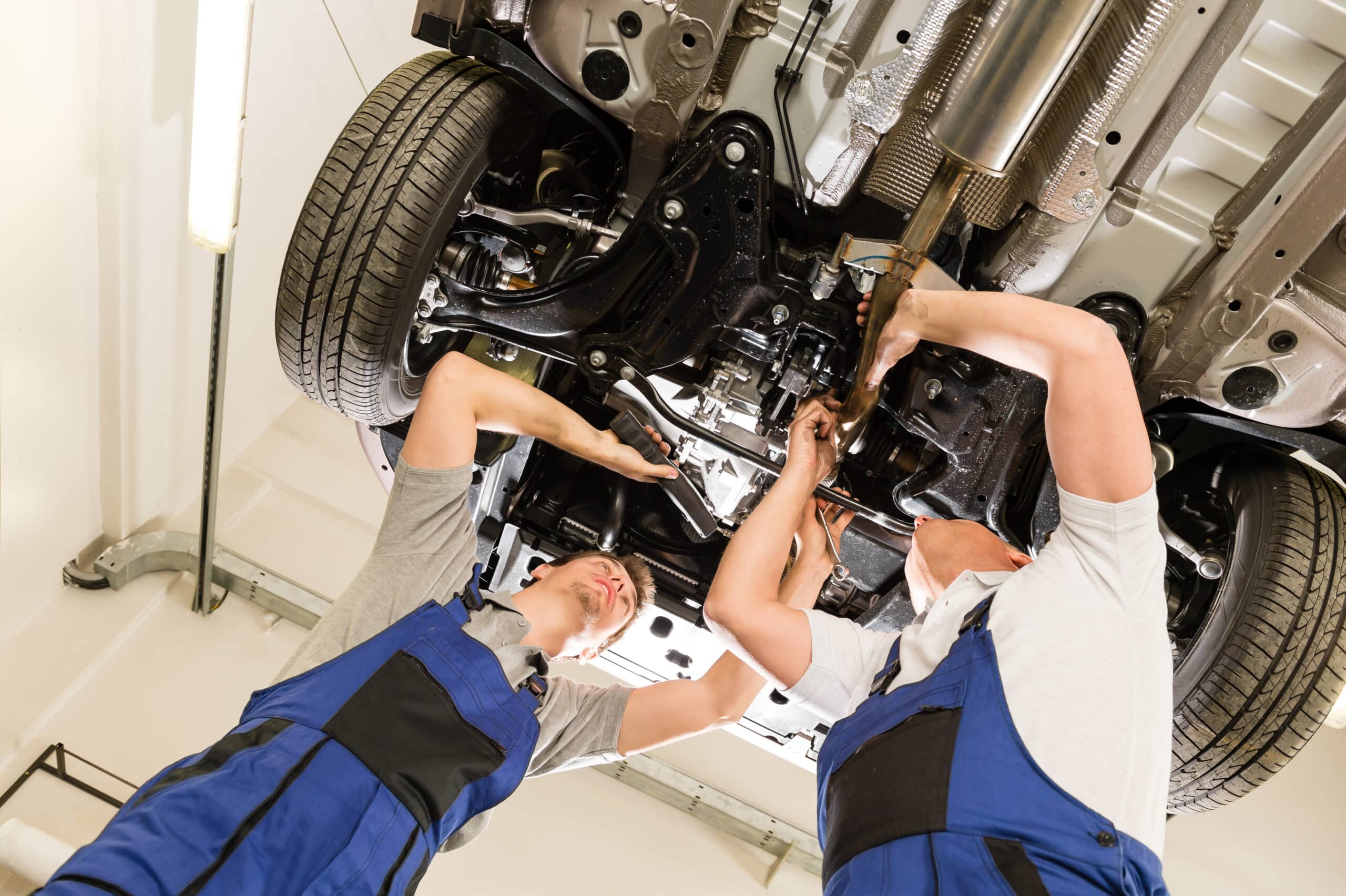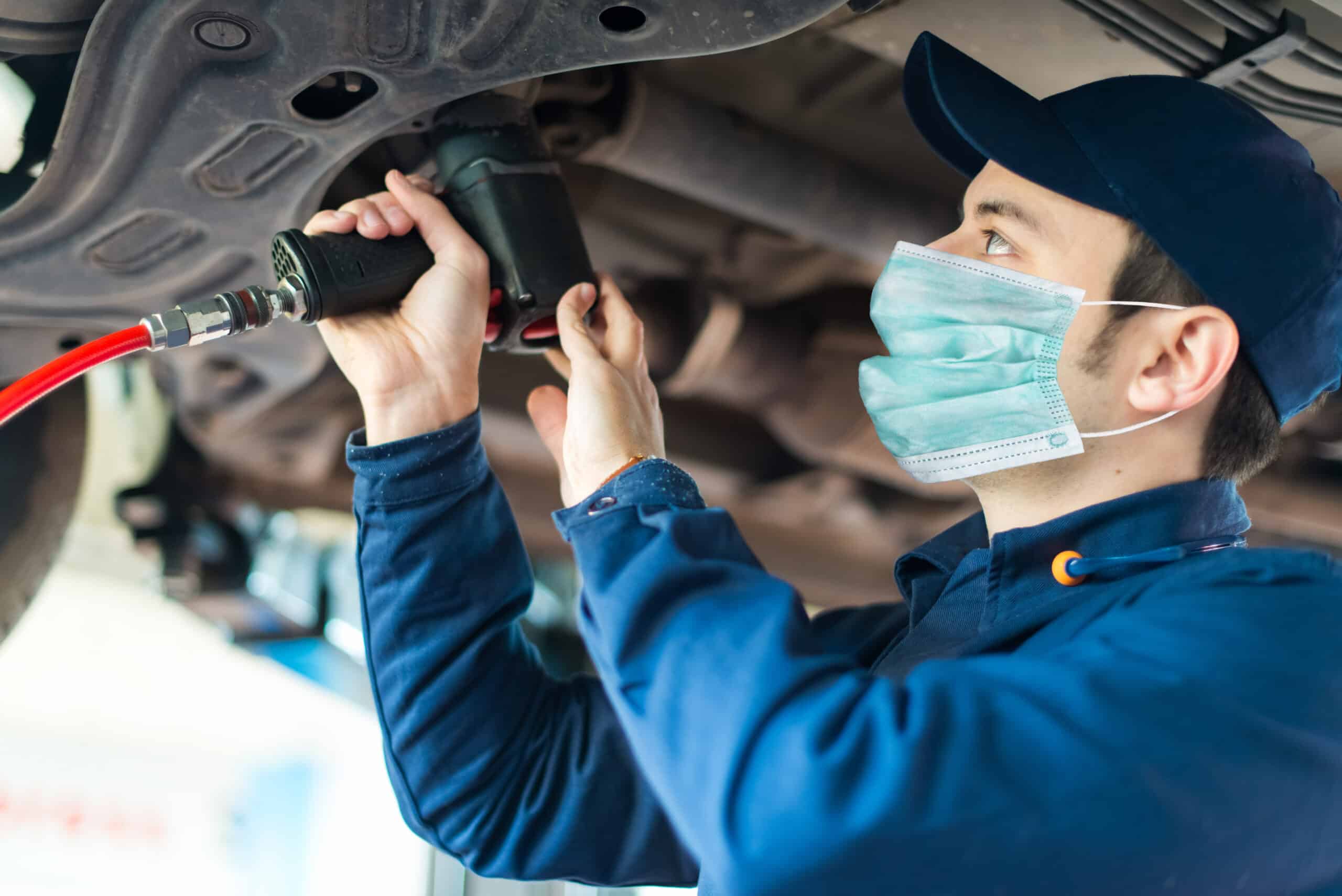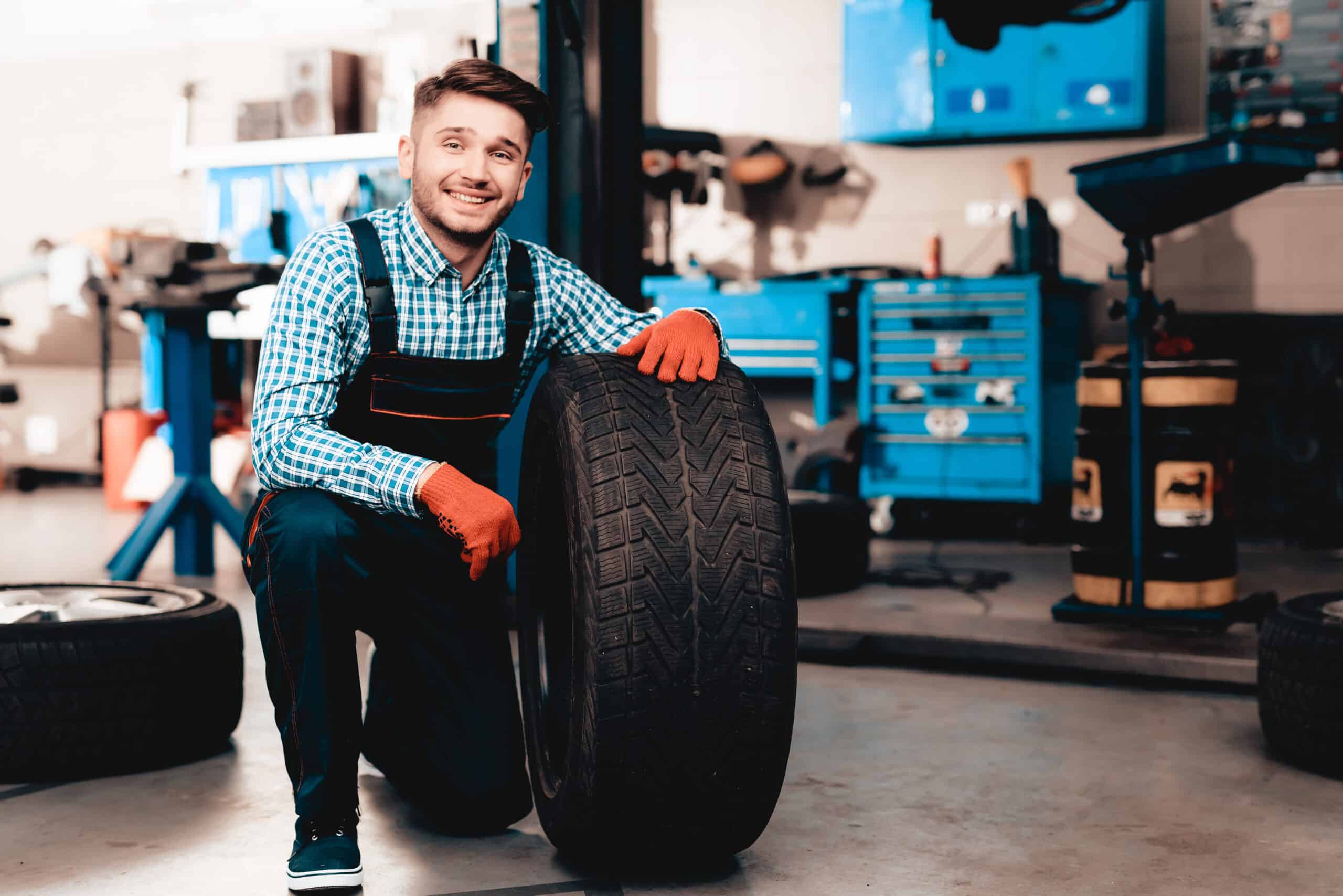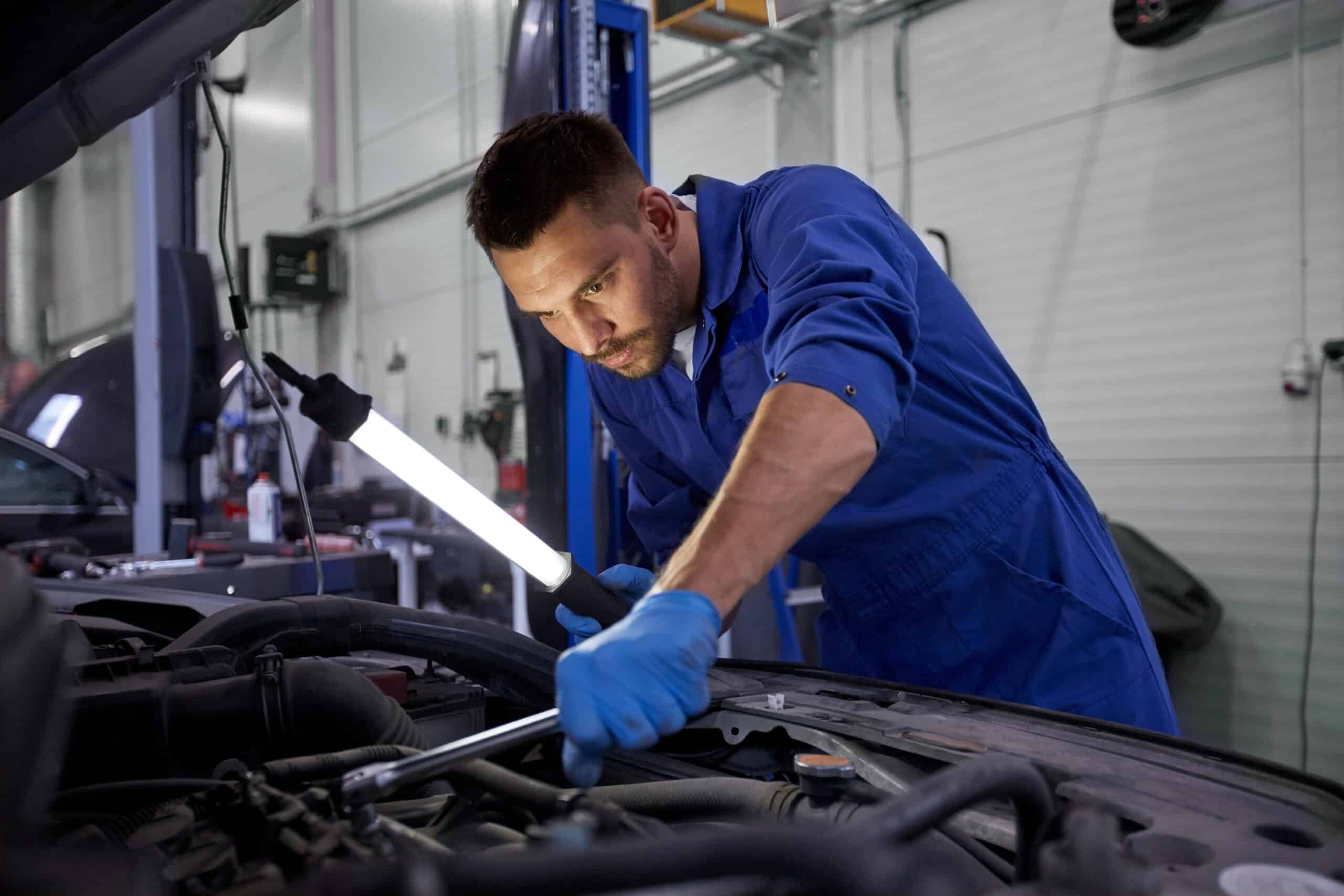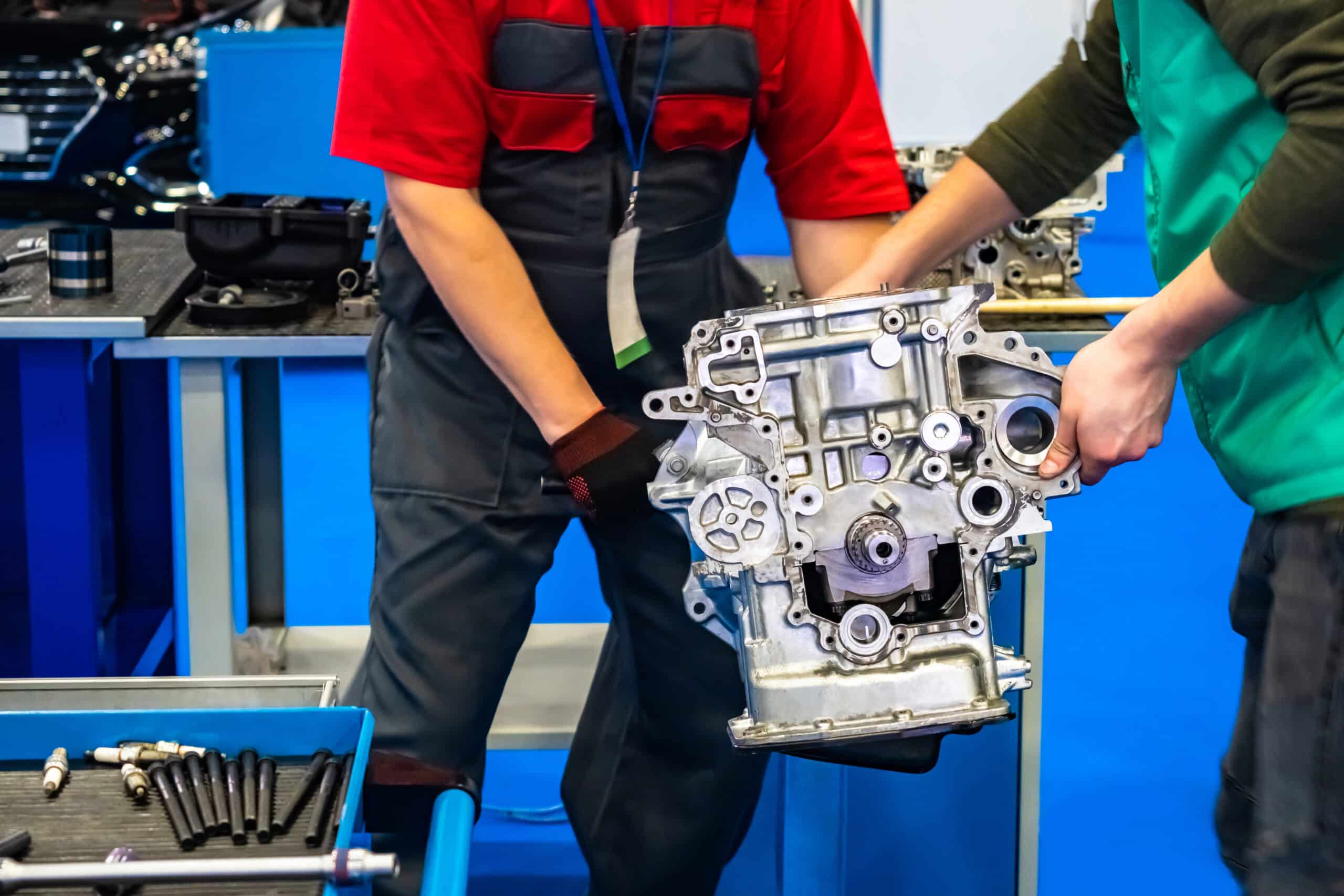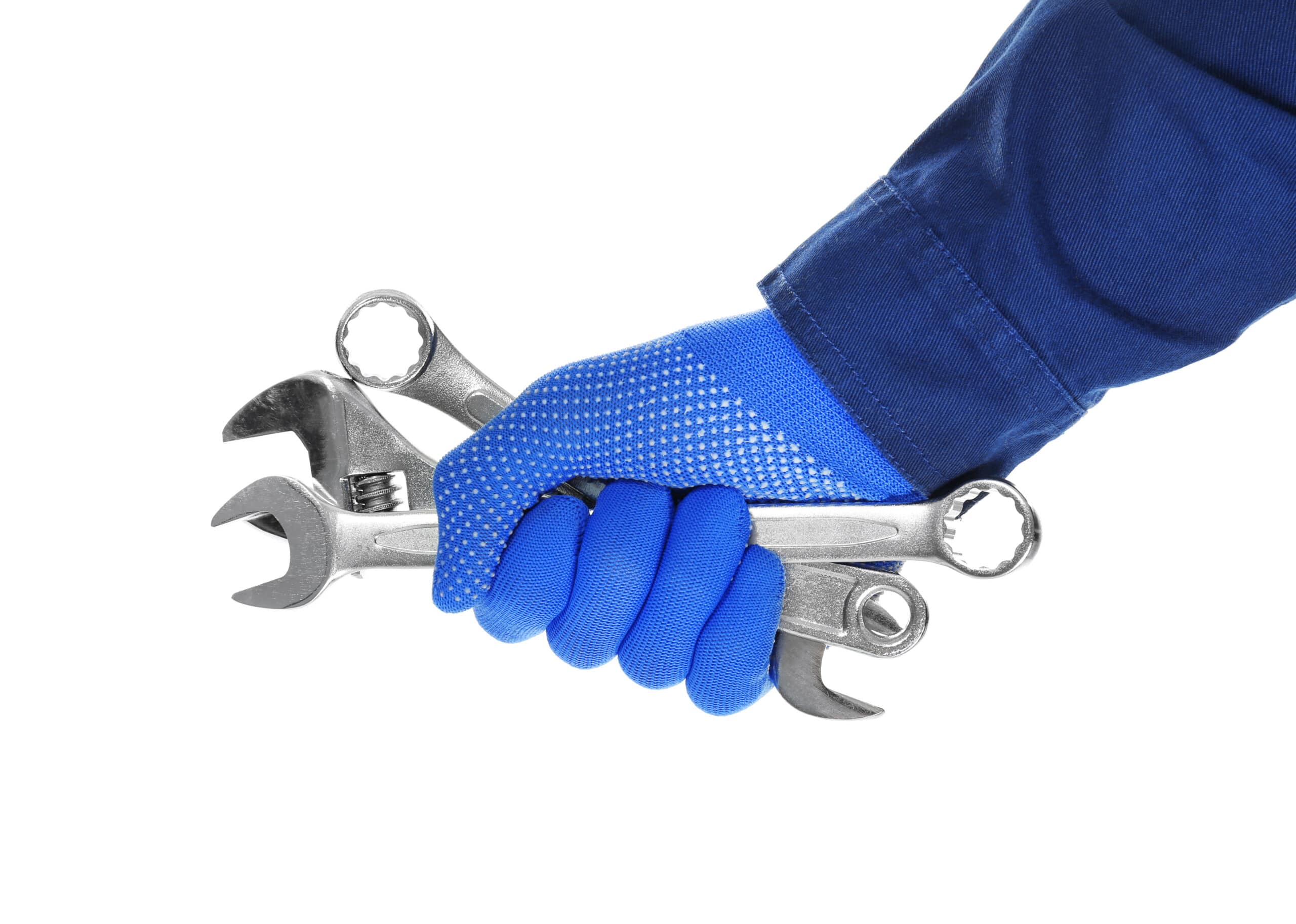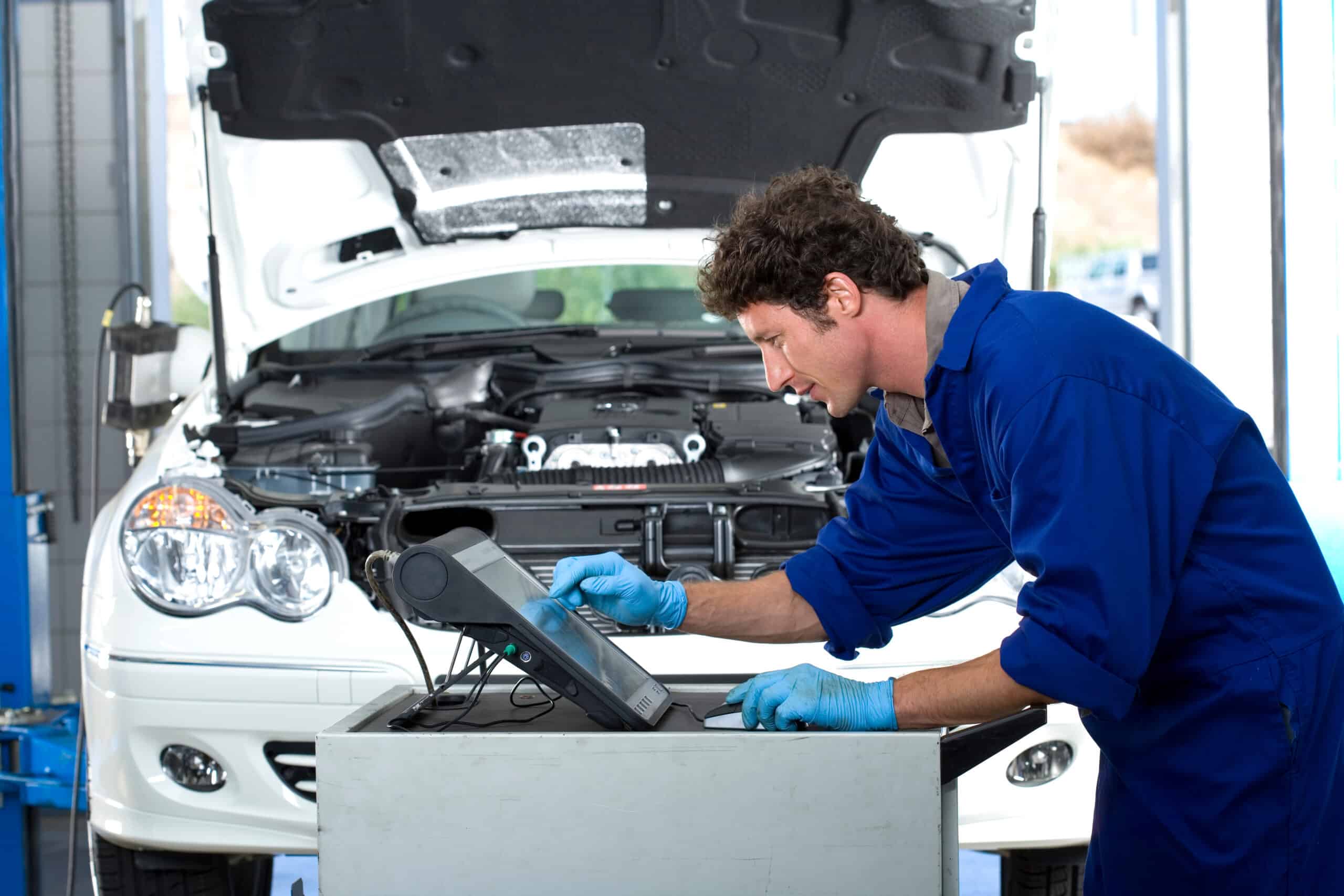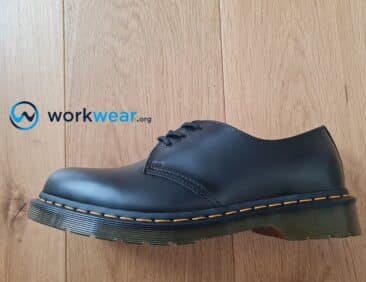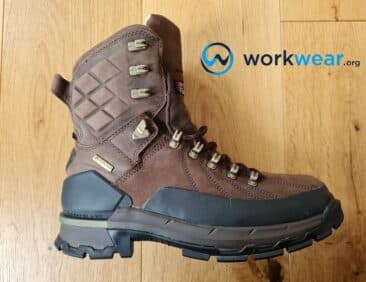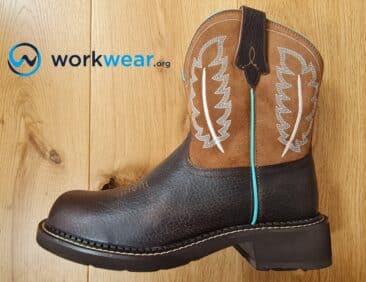Work Wear PPE Requirements for Car Mechanics
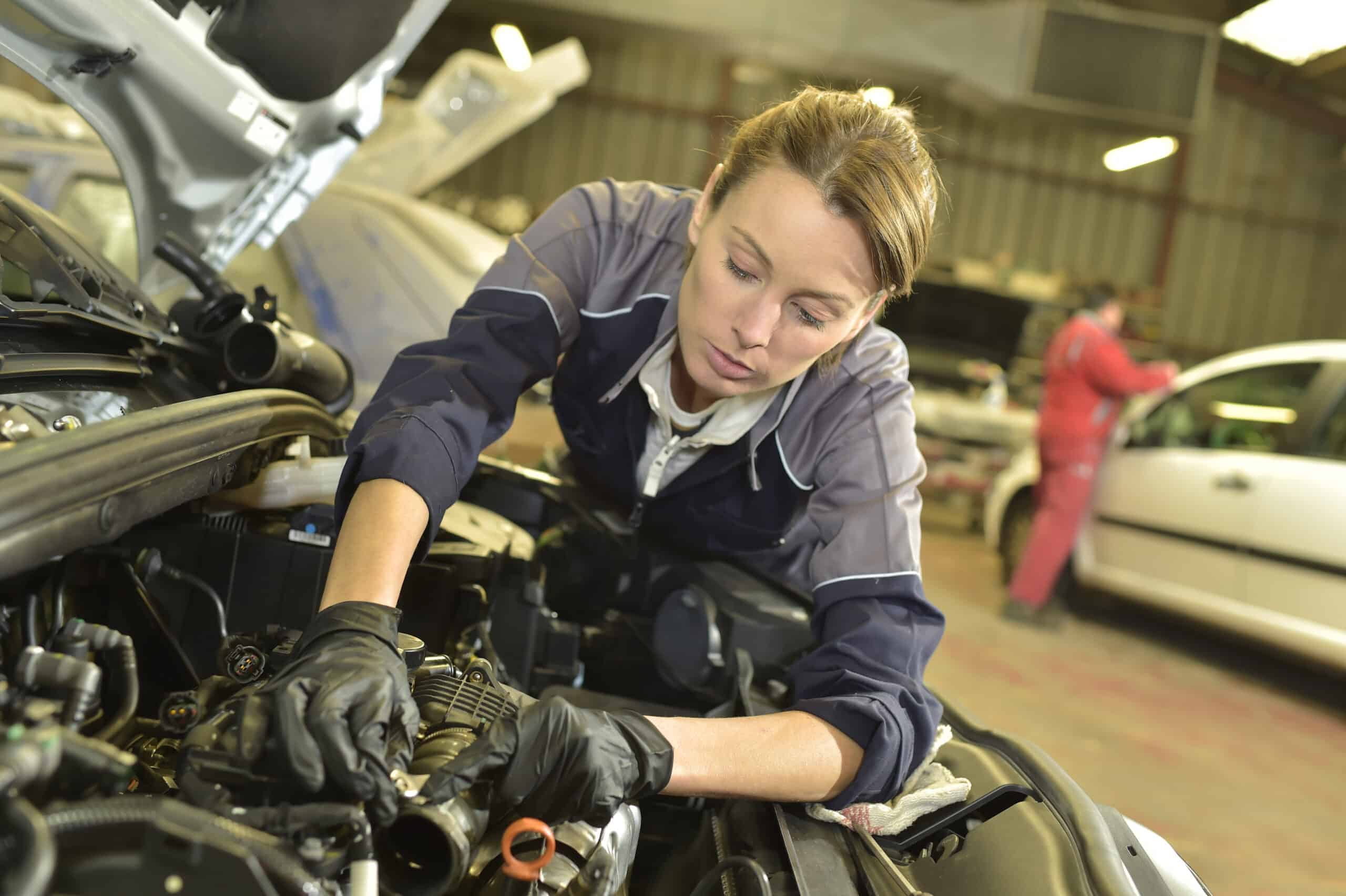
Car (or auto) mechanics are responsible for diagnosing, repairing, overhauling, and maintaining automotive vehicles. In the US according to the US Bureau of Labor Statistics, there were almost 630,000 automotive mechanics and service technicians as of May 2021. The environment in which these professionals work includes heavy machinery, numerous tools, and equipment – all of which can pose safety hazards without proper handling and safety gear. Sometimes, accidents can still happen even with all the safety precautions. Hence, car mechanics need protective gear to minimize the effects of such untoward incidents in the workplace.
Body Parts Affected by Injuries
For auto mechanics, these are the body parts most commonly affected by injuries while doing the required tasks in the workplace.
Hand
Auto mechanics rely on their hands to use tools, vehicle parts, and equipment to manage the required tasks. When these objects need to be carried around the work area, the hands can get scratched or cut by sharp components or rough parts. Heavy items may cause serious injuries if they accidentally drop or roll on the hands. Repetitive motion that may be needed to repair certain parts of the vehicle can strain the wrist and cause pain – such as that brought by carpal tunnel syndrome. Car mechanics’ hands are at risk for chemical burns when handling harsh chemicals needed for vehicle maintenance and repairs. These parts may also be harmed when touching the hot engine or other auto parts. In worse cases, accidents when handling power-cutting tools can lead to the loss of a finger or grave injuries to the entire hand.
Back
Car mechanics often need to stay in one position for extended periods when concentrating on vehicle maintenance or repairs. As a result, they may stay in unnatural positions while doing the necessary tasks, which can cause significant discomfort, especially for long hours. For example, crouching or staying in a bent-over position while working on a car’s engine will strain the back muscles and contribute to poor posture in the long run. The back muscles will also need more effort to lift heavy car parts and equipment, which may cause injuries without the right lifting techniques or tools. Sudden movements, such as lifting heavy objects or quickly moving up from bending over the vehicle’s hood, may also increase the risk of pulling back muscles.
Shoulder
The tasks of car mechanics often require repetitive movements that can cause significant wear and tear to the affected body parts’ muscles and soft tissues. For example, when doing maintenance work or repairs on vehicles, they’re lifted so that their undercarriage can be expected – which means that the mechanic will need to reach up to get the job done. The continuous overhead movements will strain the tendons and muscles around the shoulder, causing a great deal of pain that worsens the longer the repetitive motions are made. Sometimes, the rotator cuff (the tendons and muscles surrounding the shoulder joint) can become inflamed and painful even after the repetitive movements are finished.
Eyes
Auto mechanics’ eyes are at risk for injuries when working in garages or car repair shops. When working with cutting tools, torches, or grinders, the sparks or tiny particles produced may accidentally fly into the eye and cause serious injuries if protective goggles aren’t in place. The eyes can be injured by small objects and larger ones in the work environment. Car parts and pieces of equipment or machinery may accidentally fly, especially when these components are subjected to significant force or pressure. These flying objects can cause permanent damage when they strike the eyes which aren’t protected by safety gear. Meanwhile, the eyes can be irritated when exposed to the strong fumes of harsh substances, such as gasoline or antifreeze.
Knee
When doing vehicle repairs or maintenance, mechanics may need to stay kneeling or crouched for a long time. Kneeling on hard surfaces, such as concrete floors, puts the body’s weight on the knees. This can result in the knee becoming inflamed as it bears excessive weight for long periods. Kneeling and rising multiple times can also make the knee susceptible to injury, as these actions cause extreme stress and overexertion to the joint.
Events that Lead to Nonfatal Injuries to Car Mechanics
These events or situations often lead to nonfatal injuries suffered by car mechanics.
Impact from/against an object
Car repair shops or garages are equipped with various machinery and equipment choices that ensure efficient vehicle maintenance and repairs. However, these items also pose safety threats when they become the source of dangerous impact or compression. For example, heavy tools accidentally dropped from high positions in the work area can injure the limbs and cause fractures. Likewise, equipment pieces or auto parts left unsecured in their places can roll or fall off and deliver hazardous impact to exposed body parts. Meanwhile, tools and other objects that protrude from their proper places can be bumped into accidentally and cause bruising or even permanent damage when they poke unprotected eyes.
Overexertion
The physically taxing nature of car mechanics’ activities results in high risks for overexertion. Lifting and lowering heavy items (such as vehicle parts and maintenance equipment) are done repeatedly so the muscles on the legs, thighs, back, arms, and shoulders can easily be strained. In addition, as the heavy work is done on a regular basis, the muscles often don’t have the chance to fully recover from the demanding tasks. The repetitive nature of auto mechanics’ duties also causes overexertion to the affected body parts, resulting in the muscles and other tissues wearing down more quickly.
Fall on the same level
Falls on the same level may be a risk for car mechanics who work on tricky surfaces. The floors of repair shops may be littered with tools or debris from other vehicular maintenance or repair work, and these items can become tripping hazards. Tripping over these objects can cause falls, leading to severe bruising or broken bones. Slippery floors can also cause workers to fall to the ground and become injured.
Fall from an elevated position
Car mechanics who examine the top portion of vehicles from elevated positions have a higher risk of falling. While the vehicles’ positions aren’t that high, the mechanic working on them may still suffer from broken bones when falling to the ground. The injuries may even be more serious if the ground has sharp or hard objects (such as machinery or tools) that the mechanic can accidentally fall on.
Slips and trips (without falling)
The floors of car mechanics’ work areas may become spilled with various liquid substances, such as brake fluid or gasoline. When not removed immediately after spilling, these liquids can become safety hazards as workers can easily slip on the ground. The same goes for pieces of equipment, auto parts, and tools that are left lying on the ground where mechanics won’t easily notice them and trip. Even without falling completely to the ground, slipping and tripping can still cause injuries. The limbs, torso, and head can still bump into surrounding machinery or vehicles, which can cause excessive bruising or fractures.
Important PPE/Workwear for Car Mechanics
Car mechanics can minimize the risk of injuries in the work setting by using the following protective gear.
Safety boots with anti-slip soles
With all the heavy equipment and vehicle parts they work with and around regularly, car mechanics will need safety boots to protect the top of their feet against serious injuries. The safety toe caps in these boots guard the toes so they won’t be crushed by heavy items that are dropped accidentally, especially from elevated areas. In addition, safety boots with high-traction soles offer even more benefits as they prevent slipping accidents on slippery or wet floors.
Gloves
Safety gloves protect auto mechanics’ hands from various safety hazards. For example, safety gloves with cut-resistant materials protect the hands from cuts and deep scratches when touching jagged metal from damaged auto parts and while handling sharp tools. The gloves also protect the skin from the irritation that can come with exposure to harsh chemicals (such as fuel or antifreeze) or from burns that can occur when handling hot vehicle parts or substances. In addition, good quality gloves are designed to promote unrestricted hand motion, allowing mechanics to efficiently do the tasks while keeping their hands safe at the same time.
Safety goggles
Eye protection is crucial when doing certain auto maintenance or repair tasks, such as cutting or welding vehicle parts. These tasks may cause small pieces to fly around, with some particles accidentally flying toward the eyes. Safety goggles form a shield between the eyes and the debris to ensure that the hazards won’t come in contact with the eyes, protecting them from severe irritation or more serious injuries. The goggles also protect the eyes from accidental liquid splashes from various chemical-based materials in the workplace.
Face shields
Car mechanics often have their faces near auto parts that need to be welded or cut for a clearer view. However, some sparks can fly and irritate or burn the skin when doing these tasks. Face shields prevent these sparks and other particles from injuring the face by creating a protective barrier, enabling the hazardous work to be finished while keeping the face safe in the process. They also protect the face against accidental splashes of harsh liquids that can harm the skin upon contact.
Coveralls
Long-sleeved coveralls are worn over the shirt and pants that car mechanics wear. These one-piece garments cover almost the entire body except for the head and feet but usually come with a loose fit to accommodate the inner clothing and unrestricted movements. The material of the coveralls protects the clothes from damage (against dirt, grease, and paint) while also forming a protective barrier over the skin against abrasive materials and harsh chemicals. In addition, coveralls protect the skin when crawling on the ground to access vehicles’ undercarriages. Some coveralls may be built with flame-resistant materials for increased safety against fire hazards, while others have insulation materials to ward off the uncomfortable chill in cold settings.
Hearing protection
Hearing protection in the form of earplugs or earmuffs will prevent hearing problems for car mechanics. The car engines, power tools, and other equipment used for auto repairs may emit loud or high-pitched noise, and long-term exposure to these sounds can damage the eardrums if protection isn’t in place. Earplugs and earmuffs can be worn to protect the ears against harmful noise levels while doing the necessary maintenance or repair tasks.
Protective sleeves
Mechanics will benefit from wearing protective sleeves that protect the arms against different safety hazards in the work area. For example, materials such as Kevlar give the sleeves a high level of cut resistance for improved arm safety when using cutting tools. They can also protect the arms from the sparks and intense heat produced by welding tasks and from acidic liquids in the environment.
Welding apron
The welding apron creates a protective shield to keep a car mechanic’s clothes and the front of the torso and legs safe when doing welding jobs. The material is designed to protect against sparks and heat, preventing them from penetrating the clothing and skin for a much safer experience. Welding aprons also enhance safety when working with molten metal that can accidentally splash onto the front of the torso or lower body. In addition, they come with adjustable straps to provide a secure and comfortable fit.
Knee pads
Knee pads cushion the knees, protecting them from being pressed directly into hard surfaces when kneeling to access a vehicle’s undercarriage or when working on the lower parts of a car. The pads can be built into the coveralls’ knee area to provide another layer of comfort and protection to the knees. However, knee pads are also worn externally over regular clothing or coveralls. These knee pads have straps that can be adjusted for the correct fit and come in hard or soft structures that may sometimes extend to cover the shin area.
Conclusion
Car mechanics face numerous safety hazards in addition to the risks of injuries caused by the work environment and physically taxing activities. Using the proper protective workwear, car mechanics can considerably minimize the threat of serious injuries to the body, including the hands, back, shoulders, eyes, and knees. Personal protective equipment aims to greatly reduce the possible injuries in the work area that car mechanics may encounter, such as impact from and against objects or equipment, overexertion, falls on the same level, falls to a lower level, and trips or slips. Auto mechanics can enjoy a safer and more efficient working environment with the help of protective workwear, including safety boots with anti-slip soles, gloves, safety goggles, face shields, coveralls, hearing protection, protective sleeves, welding aprons, and knee pads.
FAQs
- What’s the most common material for auto mechanics’ gloves?
- Nitrile is used in many mechanics’ gloves. This material protects the hands against harsh liquid substances, minor scratches or abrasions, and cut hazards. Some even offer raised patterns on the palms and fingers for a strong grip, even on wet or oily surfaces.
- Are the built-in knee pads in coveralls or work pants enough for car mechanics?
- It depends on the specific task. For example, if the work for the day is focused on welding tasks in an upright position, then the soft knee pads in work pants or coveralls will be more than enough to protect the knees. However, for tasks requiring extended periods of kneeling – such as doing repairs on the undercarriage – knee pads that are fitted externally will work best to reduce the risk of knee injuries.
- Should car mechanics always use hearing protection?
- Not always. If the work doesn’t involve using power tools or other equipment that produce loud or high-pitched sounds, then ear protection isn’t needed.
- Besides flying debris, what safety goggles bar other safety hazards?
- Safety goggles also protect the eyes against the caustic fumes emitted by certain chemicals that, without proper protective gear, can severely irritate the eyes.
References
US Bureau of Labor Statistics – https://www.bls.gov/oes/current/oes493023.htm
Michigan Surgery Specialists – https://msspc.org/5-common-causes-carpal-tunnel-arent-typing/#:~:text=Automotive%20work,the%20tendons%20in%20your%20wrist.
American Society for Surgery of the Hand – https://www.assh.org/handcare/condition/rotator-cuff-injury
The University of Tennessee Knoxville Environmental Health & Safety – https://ehs.utk.edu/index.php/2021/03/26/protect-your-eyes-from-flyingobjects/#:~:text=Goggles%20or%20the%20addition%20of,
forming%20a%20tight%20facial%20seal.
